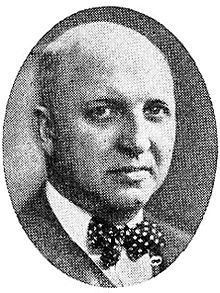Occupation Architect Name Alf Cock-Clausen | Died July 10, 1983 Buildings Danish Film Institute | |
 | ||
Born 2 March 1886 ( 1886-03-02 ) Copenhagen, Denmark Alma mater Royal Danish Academy of Fine Arts | ||
Alf Cock-Clausen (2 March 1886 – 10 July 1983) was a Danish architect. He was active during the transition from Neoclassicism to Functionalism and many of his works show influence from Art Deco. His factory for De Danske Spritfabrikker at Aalborg's harbourfrint was declared a Danish Industrial Heritage Site in 2009. Other works include the headquarters of Guttenberghus (now Egmont Media), now partly converted into the Danish Film Institute, and the Richs Building in Copenhagen.
Contents
Early life and education
Alf Cock-Claussen was born in Copenhagen, the son of Ludvig Clausen who was also an architect, working at city architect Ludvig Fenger's office. He attended Technical School in Copenhagen from 1894 to 1906 and studied architecture at the Royal Danish Academy of Fine Arts from 1905 until 1911. He won the Academy's small gold medal in 1913 and worked as a draughman and executing architect from 1905 until 1917, first for Hack Kampmann and later Gotfred Tvede. He traveled in Germany in 1910 and in Italy in 1913 on a scholarship from the Art Academy. In 1816 he received Theophilus Hansen's Grant.
Career
Cock-Claussen worked for De Danske Spritfabrikker (English: The Danish Distillers), designing numerous facilities around the country, including the factories in Hobro (1925), Aalborg (1929–30), Randers, Slagelse, Roskilde (1941) and Copenhagen (in collaboration with Preben Hansen). Other notable works in Copenhagen include Gutenberghus at Gothersgade (1926–29, expanded 1935 an 1961), now the Danish Film Institute, the Richs Building at City Hall Square (1934–36) and St. Thomas' Church in Hellerup.
